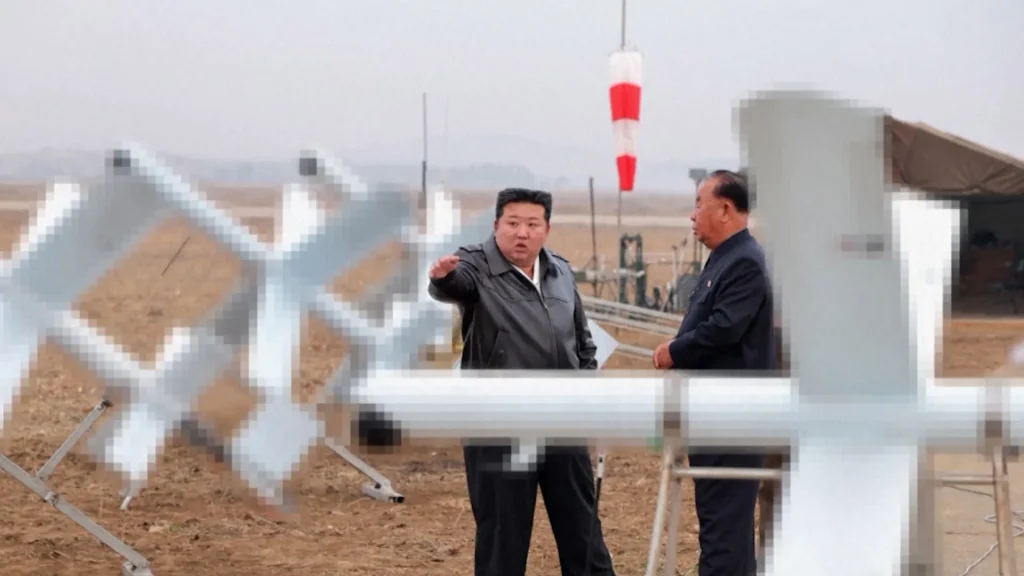North Korean leader Kim Jong Un has instructed the mass production of attack drones, according to state media reports on Friday, amid rising fears over Pyongyang’s growing military partnership with Moscow.
The nuclear-armed nation showcased its attack drones for the first time in August, sparking speculation that the advancement might be tied to its recent defence pact with Russia. North Korea is also accused of deploying troops to Russia to assist in its conflict with Ukraine, which has raised alarms in South Korea over potential transfers of sensitive Russian military technology to Pyongyang.
On Thursday, Kim oversaw a demonstration of drones designed to strike both land and sea targets. These drones were developed by North Korea’s Unmanned Aerial Technology Complex, as reported by the Korean Central News Agency (KCNA). Kim emphasized the need to establish a production line “as early as possible” to facilitate large-scale production of these drones.

The drones, described as “suicide” or “kamikaze” drones, are built to carry explosives and be piloted into enemy targets, functioning similarly to guided missiles. During the test, they reportedly flew along designated paths and hit their targets with “precision,” KCNA reported.
Kim praised the drones as cost-effective yet versatile, stating that North Korea is now prioritising unmanned technologies and their integration into the country’s broader military strategy.
Analysts suggest the drones bear resemblance to the Israeli HAROP drone, the Russian Lancet-3, and Israel’s HERO 30, leading to speculation that Pyongyang may have acquired relevant technology from Russia, which might have sourced it indirectly from Iran.
Last year, North Korea sent drones across the South Korean border, evading South Korea’s military due to their small size. This year, North Korea has also launched balloons carrying waste materials towards South Korea in retaliation for anti-regime leaflets sent northwards by South Korean activists.
With the possibility of using drones to distribute propaganda, the North could escalate its use of drones in psychological tactics, Yang Moo-jin, president of the University of North Korean Studies in Seoul, suggested. He noted that North Korea might also adapt lessons learned from the effective use of drones in Ukraine’s ongoing conflict.
In response to these developments, South Korea established a dedicated drone command last year to counter North Korea’s growing drone threat.
Relations between the two countries have worsened, with North Korea amending its constitution in October to formally categorise South Korea as a “hostile” state, following Kim’s declaration of Seoul as a “principal enemy” in January. Tensions have also been marked by North Korea’s continued missile tests and the recent destruction of cross-border infrastructure.


